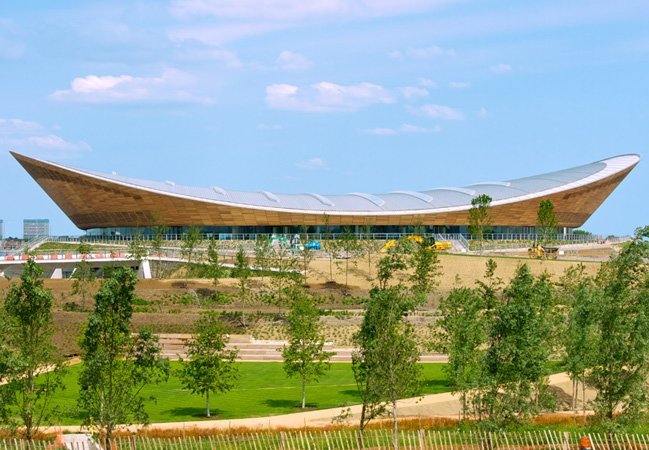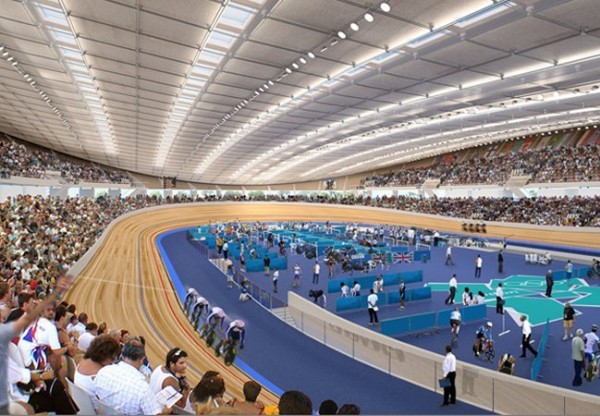In the London 2012 Velodome so far, the British women’s team has dominated in track cycling. But in the Velodome itself, sustainability is the dominant theme.
One of four permanent venues in the Olympic Park, the building was designed by Hopkins Architects, a leading United Kingdom firm in the field of green architecture. The design for the building emerged in a slow synthesis of ideas from various members of a multidisciplinary, integrated design team whose chief inspiration was the bicycle itself.

“The bicycle is an ingenious ergonomic object that is honed to unrivaled efficiency,” the architects state, on their website. They go on to note that they wanted the same application of creativity and engineering rigor that goes into the design and manufacture of a bicycle to manifest itself in the building. They see the London 2012 Velodome as a three-dimensional response to the functional requirements of the venue, formulated through a collaborative approach focused on the performance and efficiency of every aspect of the building.
Toward that end, the building eschewed what has been characterized as the “irrational and wasteful” architecture of Beijing’s Bird’s Nest for a design that has been stripped of anything extraneous to its performance. Its distinctive saddle shape follows the lines of the cycle track itself and is covered by a white, cool roof — made from a net of cables supported by the surrounding steel superstructure — that will deflect the summer sun during the games, reducing the venue’s cooling needs.
The western red cedar cladding imparts the building with its distinctive, organic look, but it’s more than just a pretty face. This cladding allows for convective cooling of the interior space, a fact no doubt appreciated by the crowds gathered in the two rows comprising a total 6,000 seats, as the sheer numbers of bodies gathered in such venues can push the mercury into uncomfortable territory.

Temperature is a key concern for the games themselves as well, but in an opposing sense, as cyclists prefer the diminished air density (and thus resistance) of hot conditions. How to keep athletes hot and spectators cool, without blowing the sustainability goals of the building, as per the London 2012 Olympics Delivery Authority? The distinctive shape of the building here is key, as it takes the hot air rising from the track and conducts it up, above the heads of spectators, kept cool by air admitted under their seats. (Hot air is then exhausted through the top of the roof.) Rather than relying on sophisticated mechanical systems to accomplish all this, the Velodome — in the stripped down spirit of the bicycle itself — relies on the natural displacement of air through heat convection.
The Velodome’s saddle shape also comes in handy when it comes to collecting rain water, which is stored for later use in the facility.
Rows of skylights crossing the complex bring natural daylighting to the games during the day, giving the overhead lights a break, while glazed windows around the building bring light in without the solar gain. Earth-based berms are part of the building’s design, as is 300 mm of insulation.